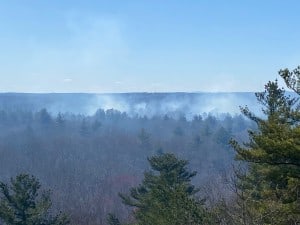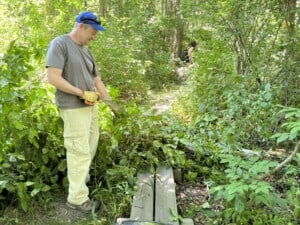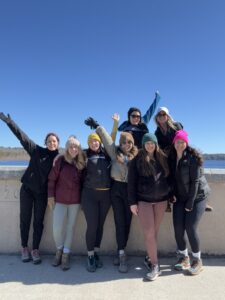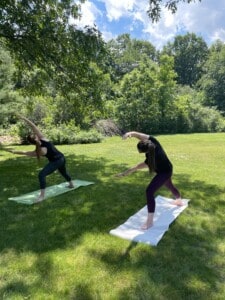A number of wildfires have burned in the Blue Hills recently, disrupting some visitors’ plans and requiring state and local fire resources. The fires, however, may have delivered some benefits to the Blue Hills fire-dependent ecosystems.
In the last month, three fires have burned in the park, including Sawcut Notch Path (1.4 acres), Old Furnace Brook Path (11.5 acres) and Slide Notch Path (16.5 acres). See map above.
Ninety-eight percent of wildland fires are human-caused, according to Chief Fire Warden Dave Celino of the Department of Conservation and Recreation.
All three fires, Chief Celino explained, have been driven by typical springtime dry surface fuel conditions. “The surface fuels, such as leaf litter, small diameter woody debris, grasses and shrubs become available to burn during weather patterns like we’ve seen over the last few weeks, where we get at least three days of no precipitation combined with drying winds and low relative humidity. All fire activity has been limited to surface fuels, as the lower soil remain very wet from winter rains and snowpack.”
The Blue Hills ecosystem has evolved with fire, and while fire near roads and development may become hazardous, the ecosystem in fact thrives with the frequent occurrence of fire in the landscape.
The fire that took place at Slide Notch Path, for example, burned almost entirely in the pitch pine and scrub oak habitat. This community is a fire dependent ecosystem. An initial assessment of the burn area, according to Chief Celino, “indicates some very favorable fire effects for this area as a whole.”
Because of the benefits to the ecosystem and safety considerations, the Department of Conservation and Recreation has completed a fire management plan for the Blue Hills, and is in the early stages of a planning process to introduce controlled fires in the Blue Hills. Controlled fires would benefit fire-dependent species, and reduce the hazardous fuel loading on those sites, which would help reduce the intensity of wildfires in the future.
Statewide there have been 41 fires in the last week, which have burned 69 acres, and 284 fire year to date for 648 acres burned.
To help prevent uncontrolled fires, please be careful to properly dispose of cigarette butts and other lighted materials.

Photo: Charlie Crosby

Photo: Jennifer Brodbeck














One observation, or lack of, was I have seen any Indigo Buntings on Buck hill this year. That is the 1st time since 2014 that I have not seen them there.
Wow. Thanks for letting us know. That’s a really interesting observation.
Thanks, Judy, for this informative update. I have to admit it was quite disturbing to first smell and then come upon these burned acres! I searched online, but couldn’t find any mention of it. So glad to know that in fact, it was beneficial to the Blue Hills that I love!
Thanks again!
So glad you found it useful! Thanks so much for letting me know.
Thank you for this informative information.
Hi Judy: Thanks for this info on fires.
Since there are some ecological benefits of fire, should DCR consider using so-called “prescriptive burns” in certain areas?
Thanks for this informative update.
Hi Cameron, Thanks for asking! YES! DCR has a plan for a controlled burn and is in the very early stages of a more in-depth plan. – Judy
The practice of controlled burns is fairly common in environments that rely on fires to help with seasonal needs of certain species. I don’t know of there preformed in the blue hills specifically, but they’re not uncommon to have
Luke,
Thanks so much for your comment. Agreed that controlled burns is a way to manage the species.
Judy: I am happy to learn there are beneficial ecological effects from fire.
Should DCR consider using prescriptive burns in certain areas?
Thanks for the interesting update. I hope all the “residents” got away. It’s great to hear there’s a plan being worked on that includes controlled burning.
Thanks for your comment. There are definitely benefits to the ecology.
Thanks so much for this important and interesting info. Since I live in the Blue Hills, I am very interested in this and it’s gratifying to know there is a plan.
Pam,
Thanks for your comment – and for caring about the Blue Hills’ forests!
– Judy
Is the splendid view from Buck’s Hill the result of past fires?
https://www.mass.gov/doc/pitch-pine-scrub-oak-community-0/download
The Vegetation Description part of this article describes the summit of Buck Hill. It sounds as if all the environmental factors must exist for these communities to thrive.